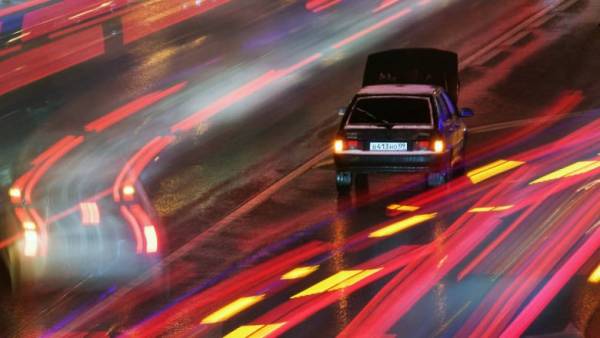
A message about & nbsp; that & nbsp; approved the transport strategy of Russia until & nbsp; 2035, published on the & nbsp; website of the government Tuesday & nbsp; the document itself appeared later. It & nbsp; is of a framework nature and & nbsp; includes long-term plans for & nbsp; development of road, rail, water, air and & nbsp; other modes of transport for & nbsp; the next 15 years.
60 trillion rubles are expected to be spent for these purposes. On the eve of its approval, in October, the document was discussed at a meeting of the Presidium of the State Council, headed by President Vladimir Putin.
“ b '' analyzed the events that will affect the & nbsp; life of car owners. The authors of the strategy (representatives of the government, State Council commissions and & nbsp; profile committees of the State Duma) paid much attention to reducing emissions into the & nbsp; atmosphere. They note, in & nbsp; in particular, that & nbsp; 61% of the pollutants emitted by transport account for & nbsp; vehicles. It is impossible to solve the problem by updating the park, according to the & nbsp; document, since 82% of harmful particle emissions are due to & nbsp; erasing the road surface and & nbsp; & quot; car.
Therefore, the government is talking about the need to limit the use of private cars, transferring their owners to public transport. This option, it says in the strategy, is “no alternative”.
In & nbsp; as one of the & nbsp; scenarios, the phased establishment of restrictions on & nbsp; the use of vehicles of “ low ecological classes '', in & nbsp; including for & nbsp; due to the creation of so-called ecological zones, where it is forbidden to enter cars with & nbsp; non-environmentally friendly engines. The idea is not & nbsp; new: back in & nbsp; 2017 in & nbsp; SDA introduced a corresponding prohibition sign, but & nbsp; on & nbsp; territory & nbsp; RF it & nbsp; has not yet been & nbsp; applied. In & nbsp; 2018 & mdash; 2019, the White House discussed the concept of “ ecological '' zones in & nbsp; Moscow and & nbsp; St. Petersburg, but & nbsp; the development project did not & nbsp; received. Now, judging by the & nbsp; theses of the strategy, the initiative will be reanimated on a & nbsp; scale throughout the country.
Note, according to & nbsp; traffic police data for & nbsp; the beginning of 2021, half of the entire vehicle fleet in Russia is made up of cars with & nbsp; Euro-0 engines & mdash; 'Euro-3' (maximum & nbsp; & mdash; “ Euro-6 '') or with & nbsp; generally unidentified class.
As part of the fight against & nbsp; noise from & nbsp; transport, it is proposed to limit the speed limit inside & nbsp; residential areas, install noise screens, and & nbsp; ; also implement digital noise control techniques. In the & nbsp; Ministry of Transport yesterday to explain what & nbsp; is talking about, not & nbsp; could. The idea to control the background noise, we recall, was first announced in & nbsp; September 2021 by the city authorities: several prototypes of sound level cameras have been created, capable of separating excessively noisy transport from the & nbsp; stream. Now, according to & nbsp; Kommersant's data, industrial samples of devices are being prepared for certification. You also need to legislate the maximum noise level and & nbsp; adopt amendments to the Code of Administrative Offenses with & nbsp; fines for & nbsp; violators (presumably, 5 thousand rubles.). The & nbsp; bill has already been prepared by the mayor's office.